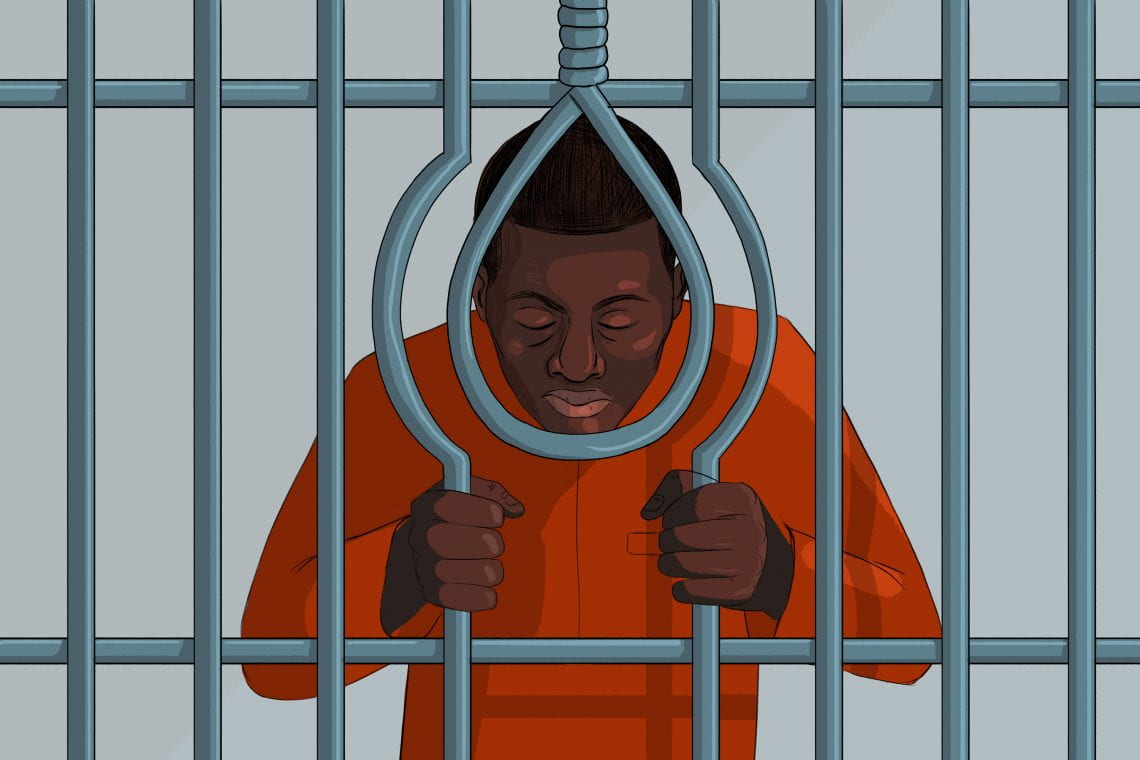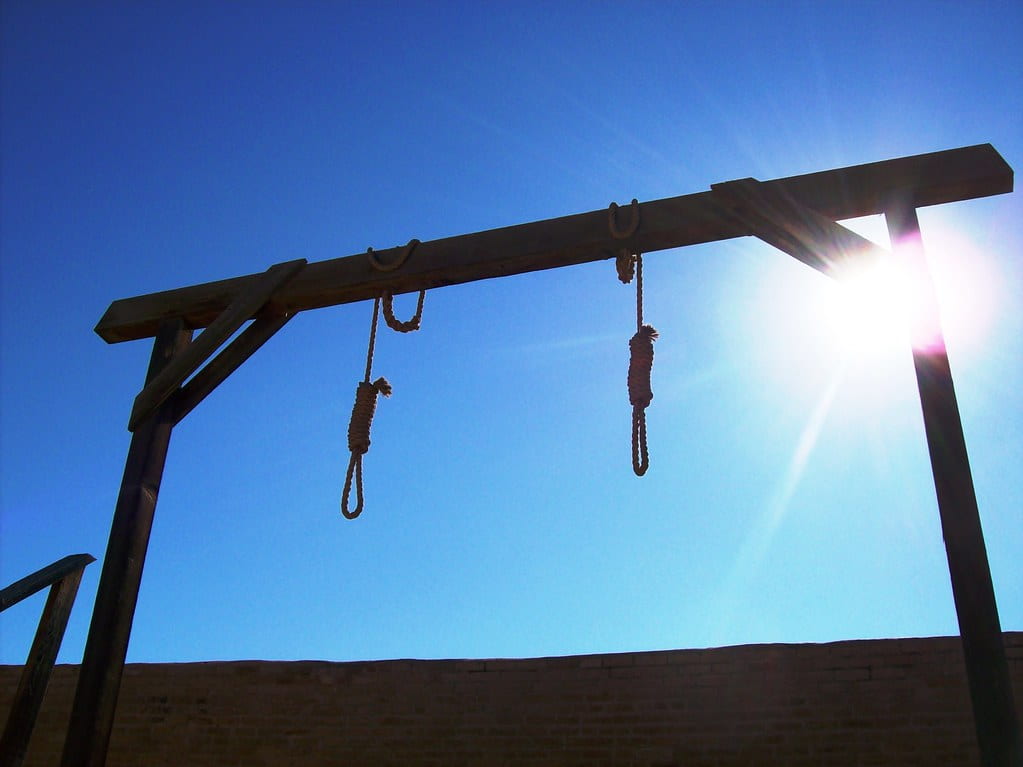
Content Warning: semi-graphic descriptions of death.
In my most recent article, I approached the issue of capital punishment by taking a broader, more philosophical stance on the ethics of taking the life of a person who has committed a crime. In this article, I will dive into the human rights issues we face when we take a closer look at the methods used to execute convicted criminals.
While researching for my last article, I fell into a rabbit hole of the methods that States use to execute people. Many states still have firing squads, gas chambers, and hangings as alternatives to lethal injection. Many states have single-drug injections where the person being killed feels their lungs fill with liquid and experiences the paralysis of their respiratory muscles, effectively choking and drowning them in their own bodies. Even during multi-drug lethal injection, it is probable that inmates are still able to feel their death even after anesthesia is given. Many inmates have twitched or moved after the injection, a clear sign that they are not fully anesthetized, including one case where a person fully sat up after being given the lethal injection, proving that his body was not anesthetized and he was experiencing the effects of the lethal drug. Click here to read a description of each of the five most common methods of execution.
Despite many different execution methods being an option for some prisoners, lethal injection is the standard practice today, as it is seemingly the most ethical. Unfortunately, there is a growing mound of research suggesting that that may not be true. One article in particular, titled Gasping For Air: Autopsies Reveal Troubling Effects Of Lethal Injection has been haunting me since I read it a few months ago and led me to choose this topic to write about this month. It is very informative and I recommend reading it if you would like to continue your research into this topic.

Alabama’s recent track record with lethal injections does not help the argument for the ethicality of the method. While researching, I came across too many horror stories of Alabama completely mishandling executions to recount them all. There will be a list of links at the end of this article to the stories that I could find. In November 2022, Governor Kay Ivey called to halt executions across the state because of a series of three botched executions in a row. All three, including Alan Miller, Kenneth Smith, and Joe Nathan James involved the inability of Alabama Department of Corrections (ADOC) workers to set an IV line for the drugs to be administered intravenously.
Unfortunately, this is a common theme in executions by lethal injection. As outlined in the Hippocratic Oath, doctors are not allowed to assist in setting the IV line for execution and most nurses refuse because of similar pledges to “do no harm.” This leaves the entire medical procedure of lethal injection in the hands of Department of Corrections (DOC) workers who are not trained in administering intravenous drugs. They often have a hard time obtaining medical training for this procedure because of the ethical restraints of the medical field and the lack of resources put towards obtaining training. DOC workers often puncture or “blow out” the veins of the arms and hands, rendering them unusable for intravenous injections. They then move on to veins in other areas, including the feet, inner thighs, stomach, collarbones, and forehead, blowing those out as well until they get lucky enough to place one without destroying it.

Alan Miller had his execution called off after the workers attempting to set an IV line took so long that his execution warrant expired. Kenneth Smith’s execution warrant expired while waiting for his case to be heard by the Supreme Court, leaving him strapped to the execution gurney for almost four hours, at least two of which were devoted to placing an IV.
In July 2022, Mr. Joe Nathan James became the victim of the longest-recorded execution in United States history. Faith Hall was murdered in 1994 by her ex-boyfriend Mr. James, who was sentenced to death row in 1996, where he sat until 2022. During this time, the family of Faith Hall petitioned the governor’s office and the Department of Corrections multiple times to express their disapproval of Mr. James’ death sentence and to ask Governor Ivey to pardon him. ADOC took over three hours, allegedly attempting to set the IV line, although it is unsure what was actually going on in that room during this time. His execution was scheduled for 6:00 PM, but observers were not let into the room until 8:57. After repeatedly puncturing, blowing out, and destroying Mr. James’ veins, they finally set the IV correctly and preemptively delivered the anesthetic before the curtain was even opened, violating his right to hear his death warrant read aloud and taking away his chance to speak his last words. To add insult to injury, the family of Faith Hall wished to attend Mr. James’ execution long enough to show him that they forgave him and to hear his last words, then leave before the execution began. They did not get to fulfill these wishes after ADOC told them that leaving before the execution wasn’t an option, saying, “Once you’re in, you’re in.”
On the day of the execution, in an embarrassing set of events, award-winning reporter for AL.com, Ivana Hrynkiw, was told by ADOC workers that she could not attend the execution because her skirt was too short and her open-toed shoes were “too revealing.” She had worn that same skirt to at least three executions before this one. A cameraman from a different media outlet offered her a pair of fishing waders with suspenders that he had in his car, and she attended the execution wearing those. Kim Chandler, another female reporter from the Associated Press, was subject to a clothing inspection before being allowed to enter the facility. It is thought that this was ADOC’s excuse to stall the entrance of media and guests into the observation room and to justify the three and a half hours that are unaccounted for. This entire execution was a nightmare for everyone involved. Following this was the failed executions of Alan Miller and Kenneth Smith, which led to Governor Ivey halting all executions.

Many people, including many church leaders, have petitioned Governor Ivey to do away with capital punishment altogether. Many people in all areas of the political spectrum have called out Governor Ivey’s hypocrisy in her intense opposition to abortion rights, citing the sacredness of life while also denying clemency to every death penalty case that has ever crossed her desk. In 2019, she denied clemency to Micheal Samra, a man with borderline intellectual functioning who was only 19 at the time of his crime, the day after passing a state-wide abortion ban.
“Every life is precious and every life is a sacred gift from God…”
– Governor Kay Ivey, the day before the execution of a teenage offender.
Instead of listening to the cries of its citizens, Alabama has authorized an execution protocol for the use of an untested execution process, nitrogen hypoxia. This entails replacing all of the oxygen in a person’s lungs with nitrogen until they suffocate and essentially drown in gas. Veterinarians consider nitrogen hypoxia an ethically unacceptable practice for the euthanasia of animals. To make matters worse, Alabama wants to test this new method on Kenneth Smith just a few months after subjecting him to his first failed execution horror story. This new method, on top of being a terrible and excruciating death for the person subjected to it, may entail dangers for the executioners and spiritual advisors in the room. In Ramirez v. Collier (2022), the Supreme Court ruled that inmates being executed have a right to be touched by a spiritual advisor during and throughout their executions, but nitrogen hypoxia may infringe on this right, making it unsafe for a person to be within close proximity to them.

I can understand arguments for capital punishment in theory. I can understand the societal benefit of executing extremely violent repeat offenders who pose an ongoing threat to others. Death may even be more humane than life-long solitary confinement in cases where those are the only two options to prevent someone from causing more harm to others. If we lived in a world where we could guarantee that an execution would be painless, quick, and respectful and that the dignity of the person being executed could be maintained, we might have grounds for capital punishment in extreme cases. But right now, the research is unsure about the experience of people receiving a lethal injection, DOC workers are not qualified to perform the medical procedure of euthanasia, and the vast majority of people receiving the death penalty are one-time offenders who are remorseful for their crimes. I cannot fathom justifying capital punishment under these conditions, especially as it is practiced in the state I call home, Alabama.
We cannot sit back and watch our Department of Corrections ask an unconscious man for his last words before executing him in silence as if his final thoughts were not worth hearing. We cannot stay silent in a state whose government will soon begin putting people in gas chambers to suffocate and drown in their own lungs, calling it justice. We cannot call ourselves humane if we support forcing other humans to experience the sensation of fire in their lungs from pulmonary edema after not being anesthetized properly, the pressure in their skulls growing until their eyes bulge from their sockets, or the terror of being strapped to your death bed for four hours straight while untrained executioners continuously prick your entire body. We must stand up for the human rights of the humans on death row.
Alabama mishandled executions:
April 22, 1983 – John Evans
July 14, 1989 – Horace Dunkins, Jr.
December 8, 2016 – Ronald “Bert” Smith
October 17, 2017 – Torrey McNabb
February 22, 2018 – Doyle Hamm
July 28, 2022 – Joe James
September 22, 2022 – Alan Miller
November 17, 2022 – Kenneth Smith
July 21, 2023 – James Barber
Most of my research for this case was from the Death Penalty Information Center. This is an incredibly holistic and in-depth database regarding the death penalty in the United States.






